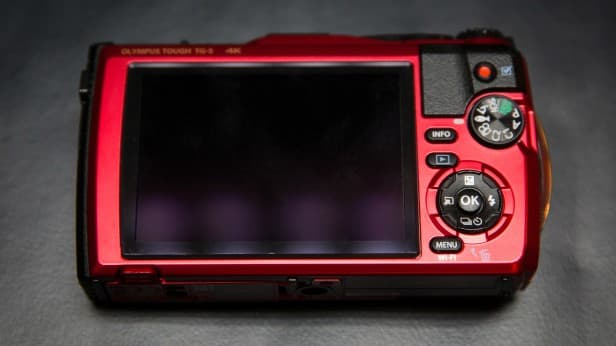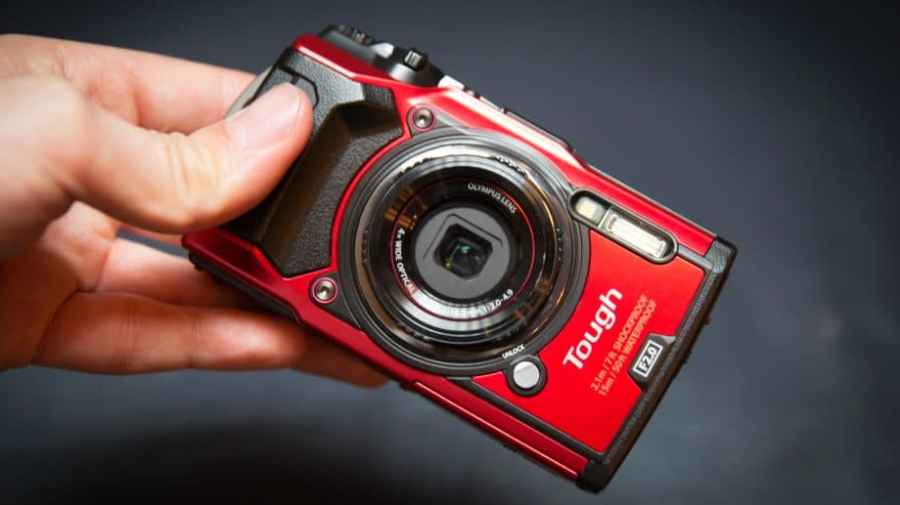Hands-on with the new go-anywhere tough compact, the Olympus TG-5
Five years since Olympus introduced its original Tough cam, the TG-1, we’re presented with the Olympus TG-5. The latest member in the series finally takes over the reins from the two-year old TG-4, with an aim of being the best rugged camera for die-hard adventurists.
With the summer months fast approaching, the TG-5 couldn’t have arrived at a better time. This is when backpackers and sporty types are seeking a camera that allows them to shoot off-limits where sand, water and dirt can cause serious damage to most everyday tech.
In the usual fashion, the TG-5 promises improved image quality with the convenience of pocket-sized portability and toughness. It also differs from its predecessor in quite a few ways.
Luckily, I got a chance to form some first impressions while spending some time handling the camera at the UK launch.
Olympus TG-5 – Features
At the heart of the TG-5 lies a new 1/2.3-inch 12MP BSI CMOS sensor. This is different sensor to the 1/2.3-inch 16MP BSI CMOS chip used within the TG-4 and pairs up with the same TruePic VIII processor you find inside the Olympus OM-D E-M1 Mark II.
The drop from 16MP to 12MP is an interesting move that Olympus says has been made to deliver improved low-light sensitivity and a wide dynamic range for improved overall image quality in a greater range of conditions. As well as being able to shoot in the versatile RAW format, users get the option to manually adjust the sensitivity across an ISO 100-12,800 range.
The lens on the TG-5 is much the same as before. It’s equivalent to 25-100mm and features a variable f/2-4.9 aperture just like the TG-4’s. The only change regarding the lens is that it now implements anti-fog dual-pane glass that’s designed to prevent the lens misting up when subjected to extreme temperature shifts. This, like many of the other changes to the camera, we’re told have been made following feedback from users of the TG-4.

Like its predecessor, the TG-5’s lens focuses down to 1cm/0.4 inches in its microscope mode, and it’s expandable with an extensive range of converters and accessories, including tele and fisheye conversion lenses, an LED macro light and a flash diffuser.
The TG-5 is also more robust than the TG-4. It’s shockproof from a height of 2.1m, crushproof to a weight of 100kg, freezeproof down to -10°C, and waterproof to a depth of 15m. Those wishing to use the TG-5 at greater depths will want to check out the PT-058 underwater housing that’ll be made available separately. This enables the TG-5 to be used down to 45m underwater.
Those who’d like to shoot the occasional movie will be pleased to hear that the video functionality of the camera has been considerably enhanced. The TG-5 is the first Tough compact to support 4K recording at 30p as well as Full HD high-speed footage at 120fps.
In addition to its impressive video spec, the TG-5 provides a version of the Pro Capture feature seen on Olympus’ OM-D line of cameras. This has been added to help catch precise moments in action sequences.
As well as being GPS-enabled, the TG-5 is also equipped with a temperature sensor, manometer and compass, so users have the option to share more information with their images to get across precisely where their shots were taken, at what altitude and have a record of the temperature at the time. Most of these features have been carried across from Olympus’ TG Tracker action camera.

Olympus TG-5 – Build and Handling
The Olympus TG-5 is built around the same shell as the TG-4, but there are a few changes to the design and layout of buttons. The grip is larger and protrudes a little further, giving you more to wrap your hand around and get a better grasp. It feels just that little bit more refined than the TG-4.
There are changes to the top plate too. The zoom is now controlled using a zoom lever that encircles the shutter button, you get a new control wheel that’s great for taking control of exposure compensation on the fly, and there’s a log switch to commence location data recording.
At the rear it’s much the same as before, but it does lose the Stylus styling below its fixed screen. At the side of the body, behind a weather-sealed door, you’ll find that it also supports USB charging.
During my hands-on time I couldn’t resist dropping it onto a solid concrete floor to see if it’s as good as its shockproof resistance claims to be. It survived an impact from arm’s length onto the floor without any sign of damage and turned on straight away.


This close-up makes striking use of a single colour, Olympus Tough TG-5, 1/100sec at f/14, ISO 800, ANicholson
First impressions
Whenever we’ve rounded up a group of tough compacts for testing in the past, Olympus’ Tough series has always fared very well, coming out on top on more than one occasion. The TG-5 might not be the radical upgrade to the TG-4 that some might have been expecting, but nevertheless it offers a number of practical benefits over its predecessor.
The addition of 4K video and the option to record Full HD high-speed footage at 120fps will be well received by adventurists who’d like to shoot movies underwater or in unpredictable situations, while the Pro Capture mode should make it easier for users to capture decisive moments as they happen.
Although I’m yet to spent a huge amount of time with the camera, its wake-up and general response times do seem slightly faster than the TG-4’s.
The only thing I’m slightly skeptical of is the new zoom lever. How well this will perform when it’s subjected to sandy conditions is yet to be known, and like the new sensor, it’s something we’ll keep a close eye on throughout testing.
Overall, first impressions of the Olympus TG-5 are very promising. It looks set to be one of the most popular tough compact options for adrenaline junkies or those who simply want a go-anywhere, shoot-anything camera.









